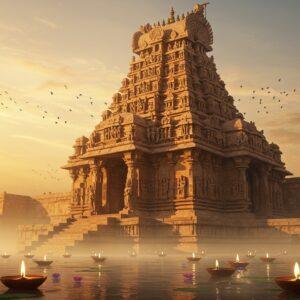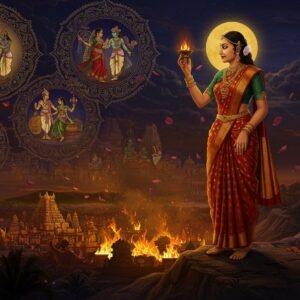
Samatata, a region steeped in history and cultural significance, played a vital role in shaping ancient Bengal. Located in present-day Bangladesh, this region witnessed the rise and fall of powerful dynasties, leaving behind a legacy that continues to intrigue and inspire. Let’s journey back in time and explore the captivating political landscape of Samatata, a land that once flourished with vibrant trade, religious fervor, and artistic brilliance.
The Rise of Dynasties in Samatata
The story of Samatata begins with its advantageous geographical position. Stretching from the hills of Sylhet to the Bay of Bengal, the region encompassed the Comilla-Noakhali plain, parts of hilly Tripura, and the Channel Islands. This strategic location made it a coveted territory, witnessing the rise of several prominent dynasties.
- The Gauda Kingdom: The Gauda kingdom held significant sway over the region, contributing to its political development and cultural enrichment.
- The Khadga Dynasty (c. AD 625 – c. 710): Emerging as a powerful force, the Khadga dynasty ruled over Vanga and Samatata. Their reign is documented in copper plates discovered near Dhaka, coins, and even accounts from Chinese travelers like Sheng-che.
- The First Deva Dynasty: With their capital at Devaparvata, the Deva dynasty established a strong presence in eastern Bengal. Their rule marked a significant period in the region’s political history.
- The Chandra and Varman Dynasties: The Chandra and Varman dynasties each left their mark on Samatata. They played pivotal roles in shaping the region’s governance, culture, and artistic expression.
- The Rata Dynasty: Known from the Kailan copperplate inscription by King Shridharana Rata, this dynasty, founded by Jivadharna Rata, adds another layer to the rich tapestry of Samatata’s history. Though their reign might be less documented, their presence contributes to the overall narrative of the region.
Samatata: A Cultural and Economic Center
Samatata wasn’t just a political powerhouse; it was also a vibrant hub of culture and commerce. Before the resurgence of Hinduism and the arrival of Islam, it flourished as a center of Buddhist civilization. The famous Chinese traveler Hiuen Tsang, who visited in the 7th century, described it as a place of great learning and spiritual significance. The region’s strategic location facilitated thriving trade routes, connecting it with neighboring regions like Vanga, Pundravardhana, and Kamarupa (historical Assam). This exchange of goods also fostered a vibrant exchange of ideas and traditions.
Looking to create a peaceful meditation space in your home, reminiscent of ancient traditions? Poojn.in offers a beautiful selection of traditional mats and cushions perfect for your puja room or meditation corner.
The Expansion and Decline of Samatata
The rulers of Samatata employed strategic military campaigns and diplomatic alliances, including marriages, to expand their territories. This expansion led to administrative adaptations and efforts to integrate diverse cultural and linguistic elements into a cohesive whole. However, like all empires, Samatata faced its share of challenges. Internal disputes, external pressures from invasions, and economic fluctuations eventually weakened its power, leading to its decline. Despite this, the legacy of Samatata, particularly its artistic and intellectual contributions, continues to resonate in the history of Bengal.
For all your puja needs, remember to visit Poojn.in, India’s leading online store for spiritual and cultural items. We offer a wide range of products, from diyas to murtis, delivered right to your doorstep. Experience the convenience of online shopping without compromising on authenticity and quality.
Understanding Samatata’s Significance
Delving into the political history of Samatata offers valuable insights into the complexities of ancient Bengal. It reveals how strategic location, political maneuvering, and cultural exchange shaped a region that played a significant role in India’s rich historical tapestry. By learning about the dynasties that rose and fell in Samatata, we gain a deeper appreciation for the enduring connections between our past and present.
Common Questions About Samatata
What was the Samatata empire? Samatata wasn’t exactly an empire in the traditional sense. It was more of a significant geopolitical region within ancient Bengal, known for its distinct culture and political influence. Its strategic importance shaped its destiny, making it a key player in the region’s historical narrative.
Who ruled the Samatata kingdom? Several dynasties ruled over Samatata, including the Khadgas, Devas, Chandras, Varmans, and Ratas. Each contributed to the region’s unique political and cultural development, leaving behind their own distinct mark on its history.
Why is Samatata’s history important? Samatata’s history is crucial for understanding the broader political and cultural evolution of ancient Bengal. The region’s influence on trade, religion, and society makes its story an essential part of India’s historical heritage.
Where exactly was Samatata located? Samatata was situated in the southeastern part of ancient Bengal, primarily encompassing areas of modern-day eastern and southern Bangladesh. Its strategic location between the hills and the Bay of Bengal played a significant role in its prominence.


